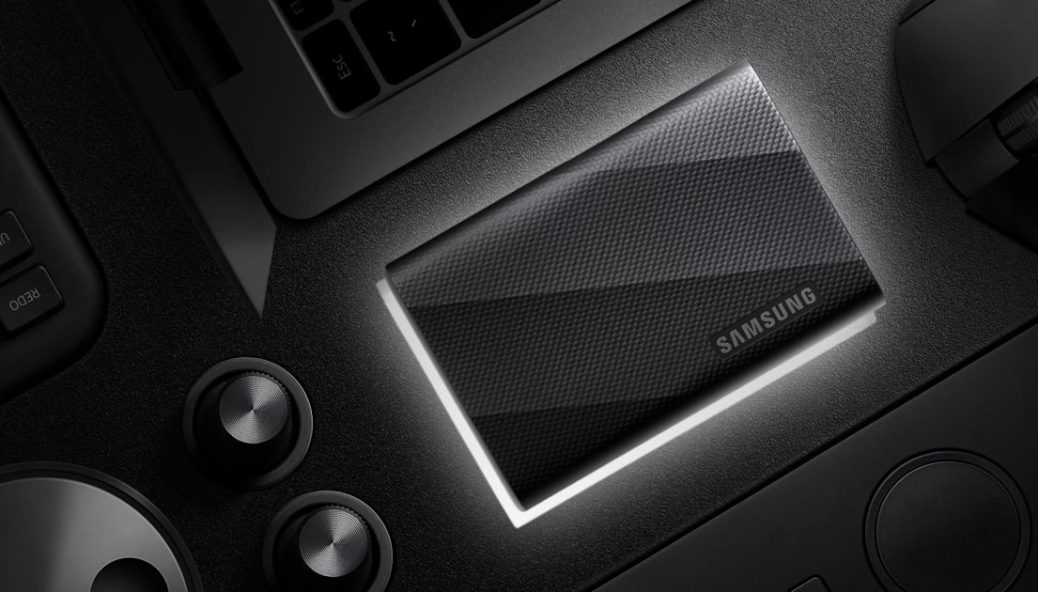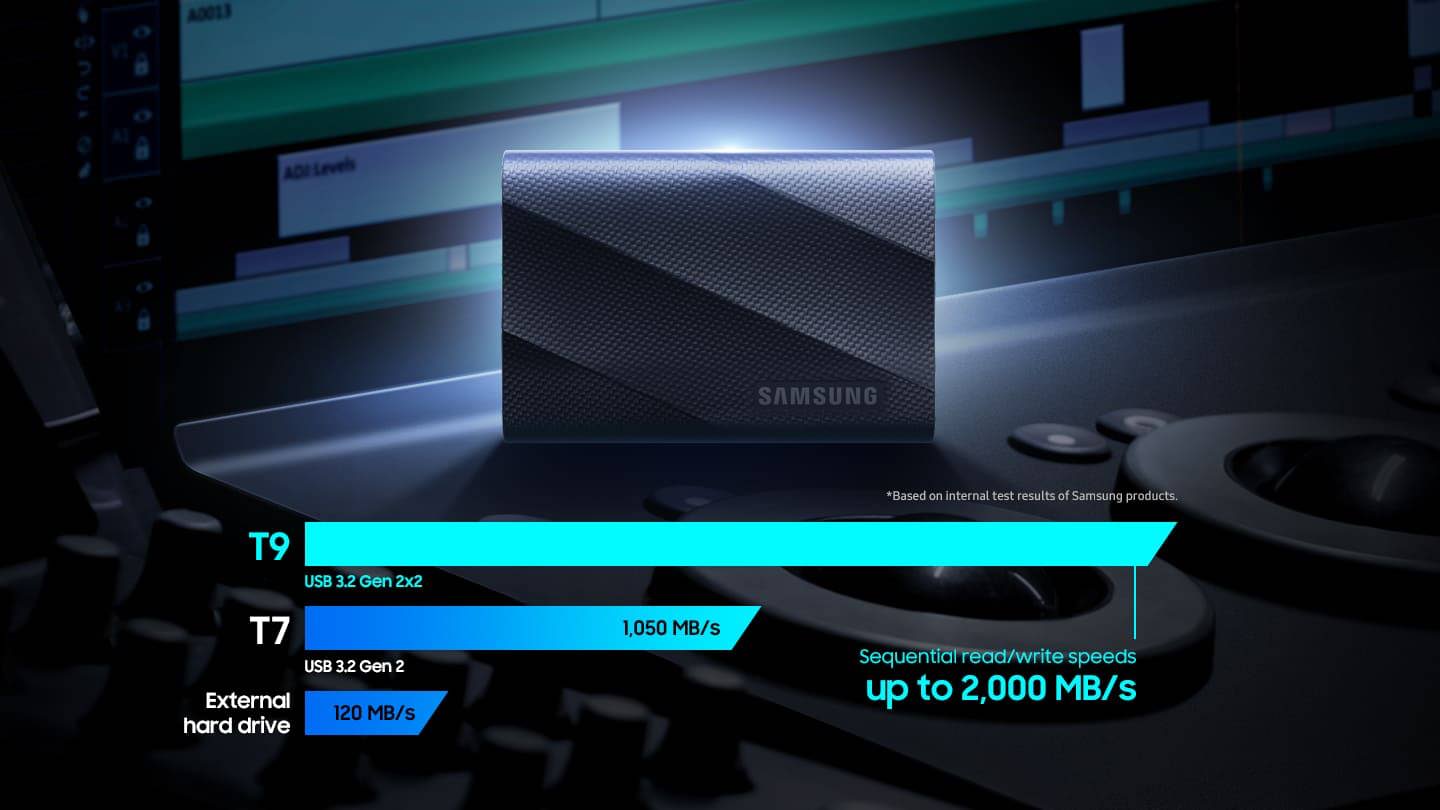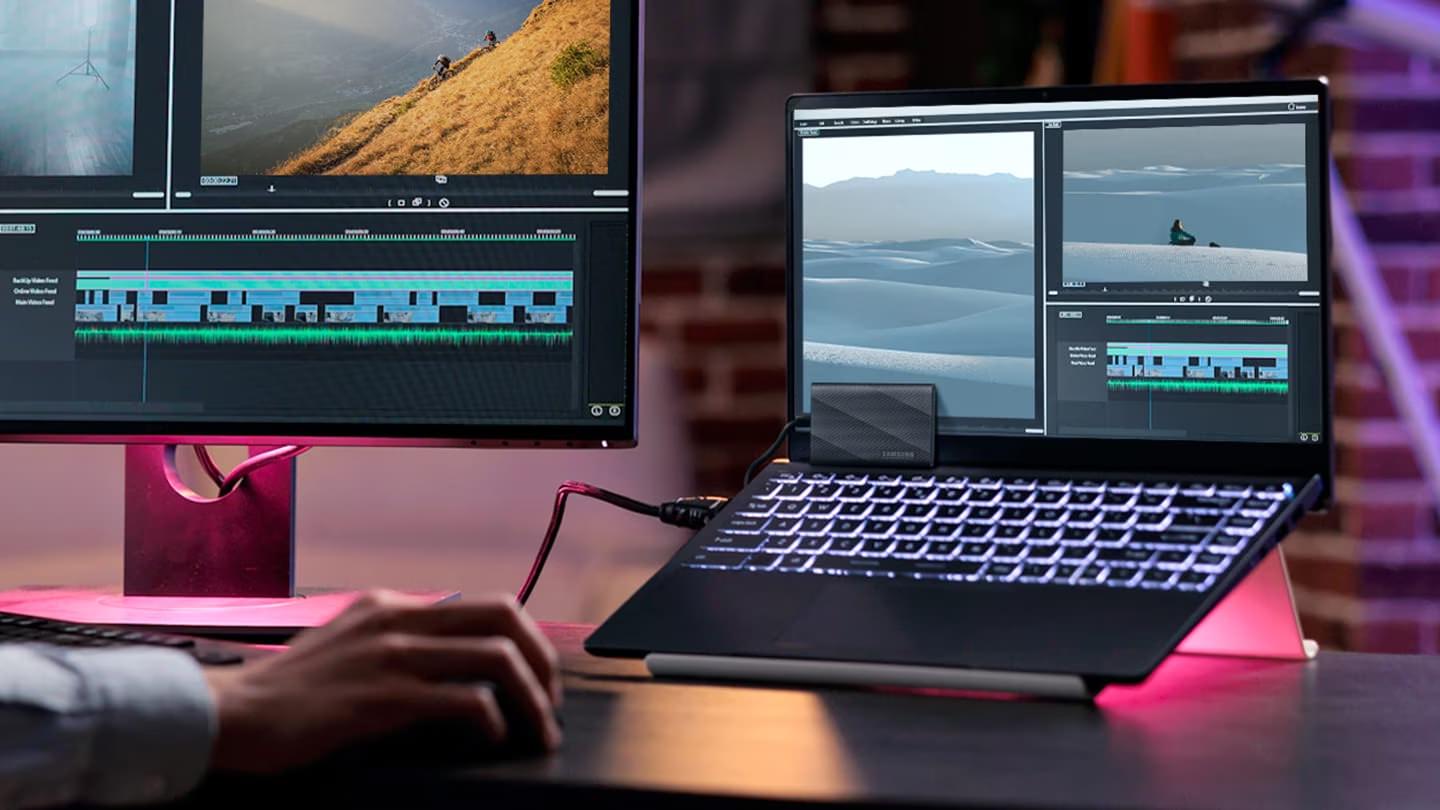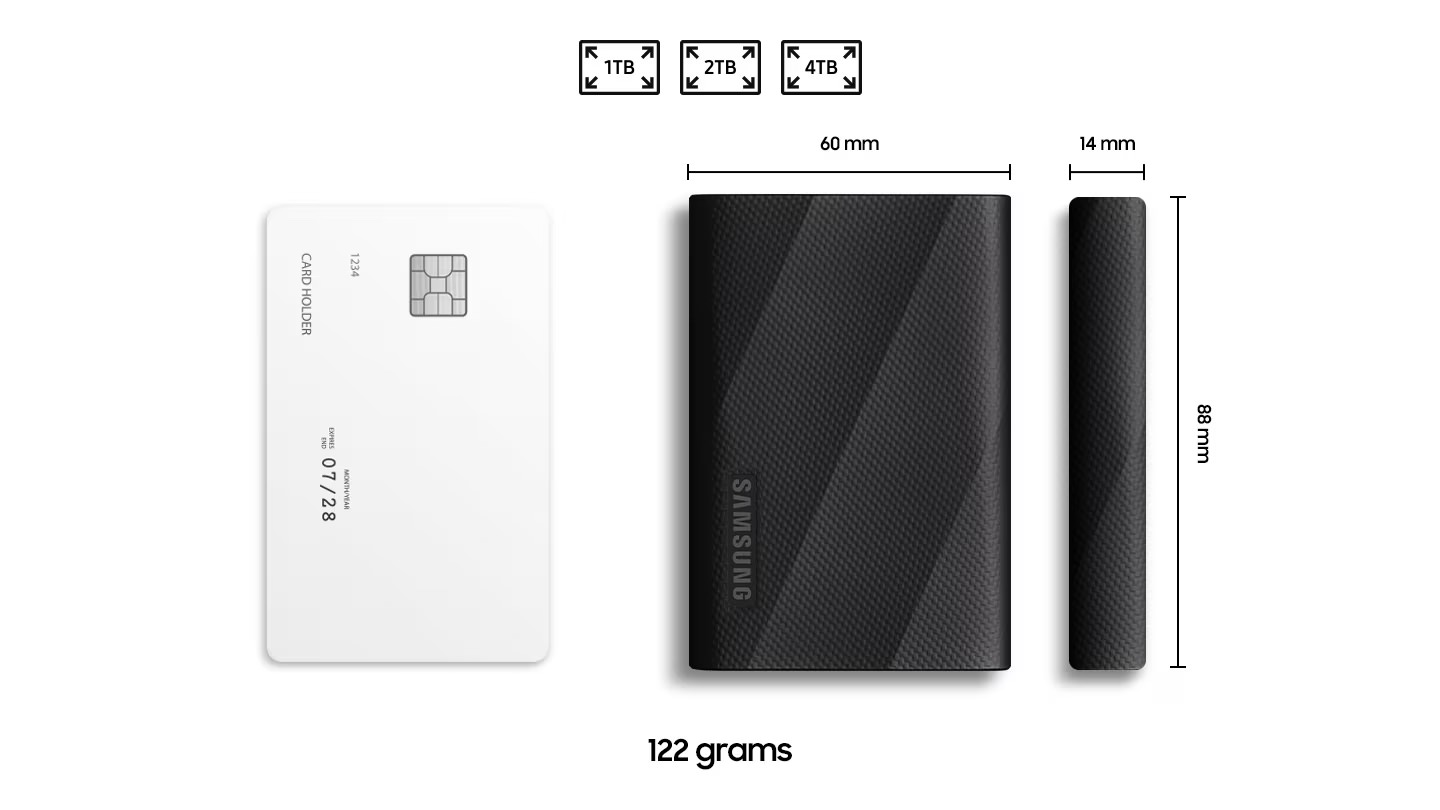Samsung Unveils the Portable SSD T9
The Samsung Portable SSD T9, the T7’s replacement, has been introduced. The Samsung T9 outperforms its predecessor in terms of performance and features an appealing new look.
The most noticeable distinction between the Samsung T7 and T9 is the appearance of the portable SSDs. Whereas the T7 features a ridged silicone shell, the T9 portable SSD has a new, more sumptuous textured silicone. According to Samsung, the design philosophy for its new SSD is luxury combined with durability, which seems to be a fair assessment. The rubber has a carbon-fiber texture pattern and feels like fabric thanks to the small ridges.
The texture has the advantage of being extremely gripping. The SSD adheres to the surface of a table or desk and is easy to grip securely. The one drawback to the design — and this is a minor quibble — is that not only is it sticky on desktops, but the T9’s unique texture also makes it a hair and dust magnet.
The device is also durable. It has a strong aluminum body and can withstand fall of up to three meters, which is significantly greater than the average slip from someone’s hands. The drive is also backed by a five-year warranty.
The Samsung T9 measures 88 x 60 x 14 millimeters and weighs 122 grams. The T9’s new silicone cover is slightly thicker than the T7’s, adding about 20 grams to the drive’s weight and a minor amount to its thickness.
The T9 comes with two 0.45-meter cords. One is a USB-C to USB-C connector, while the other is a USB-C to USB-A connector. The cords are relatively long in comparison to those that come with portable drives, but they are completely adequate for use. The T9 connector has a firm, tight connection and an adjacent blue status LED.
The switch to the USB 3.2 Gen 2×2 interface, up from the conventional USB 3.2 Gen 2 standard used in the T7 and quicker than the T5 that came before it, is driving greater performance. When using its USB 3.2 Gen 2×2 interface, the T9 boasts up to 2,000 MB/s transfer speeds, roughly doubling the theoretical maximum speed of the T7.
The disadvantage of the USB interface is that in order to fully benefit from these speeds, a user must have a computer or device that supports USB 3.2 Gen 2×2, which is uncommon throughout the whole computing spectrum. No Apple Silicon machine has it because Apple chose the more sophisticated USB 4.0 instead. USB 4.0 is supported with the M1 Max MacBook Pro, but not USB 3.2 Gen 2. As a result, the Samsung T9 can theoretically reach only half of the claimed speeds because it only supports one lane of the dual-lane USB 3.2 Gen 2×2 interface.
When contemplating the Samsung T9, this is a significant caveat. While the T9 cannot attain anywhere near its theoretical maximum speeds without USB 3.2 Gen 2×2, it still outperforms the Samsung T7, which is already a very capable portable SSD that represents good value for photographers and videographers.
The T9’s performance also means that it is compatible with virtually every 4K, 6K, and 8K video format available, as well as many 12K video file types.
While top speed is impressive and undeniably helpful, sustained speed is critical in real-world applications. To that aim, Samsung’s TurboWrite technology provides a fast write buffer space. The buffer size of the T9 is determined by the drive capacity. The 1TB version includes a buffer of 22GB, while the 2TB and 4TB capacities have buffers of 88GB and 180GB, respectively. Samsung claims that these buffers are significantly greater than competitors, particularly in the case of the 4TB T9, which has three times the buffer of a normal comparable SSD.
Thermal design and control have an impact on real-world performance as well. The Samsung T-series SSDs are engineered to avoid heat-related failure during extended use. The T9 includes thermal interface controls and heat-dissipating materials such as silicone and aluminum. The T9, according to Samsung, keeps cooler than competitor SSDs throughout the board, including the surface, bridge chipset, control circuitry, and flash memory, which is a Samsung NAND.
The Samsung T9 is currently available in capacities of 1TB, 2TB, and 4TB for $140, $240, and $440, respectively.




